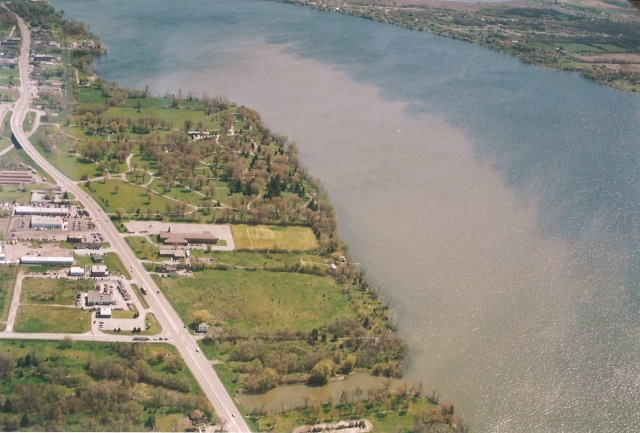New project to help farmers and the environment
BELLEVILLE – Quinte Conservation has started a program to reduce the high amount of phosphorus and nutrients spilling from farms into Potter’s Creek, a conservation area just off Old Highway 2 in Belleville’s west end.
Phosphorus is a nutrient that is a natural part of aquatic ecosystems and supports the growth of algae and aquatic plants. But when too much phosphorus and other nutrients enter the environment the air and water can become polluted, according to the United States Environmental Protection Agency.
“Potter’s Creek has been identified as a contributor to phosphorus and nutrient loadings into the Bay of Quinte,” Christine Jennings, Quinte Conservation’s environmental technician, said in a press release.
The nutrients contribute to the growth of blue-green algae, which Jennings said produce a toxin that can be harmful to human health and the health of pets and livestock if they drink water with the algae in it.
Quinte Conservation’s plan is to lease a strip of land from farmers along the banks of Potter’s Creek to slow the spill of the nutrient-filled soil into the creek and stop the erosion of its banks.
“It’s an incentive-based approach to help reduce the nutrient loading,” Jennings told QNet News. “We’re proposing to lease part of (the farmers’) land and take it out of tillage and crop production. So (the farmers) get some money out of doing that and it improves water quality, which they would be happy about. It improves shoreline erosion, so if the shoreline of their banks of Potter’s Creek are falling in we’re proposing to plant a buffer, and that helps hold the soils in place.”
According to a pamphlet by the government of Ontario, blue-green algae blooms can make water look like bluish-green pea soup. When the bloom is large, algae can form solid-looking clumps. Fresh blooms smell like fresh-cut grass, while older blooms smell like rotting garbage.
While agricultural runoff plays a big part in the growth of blue-green algae, there are also steps that everyone can take to prevent it. According to the pamphlet, people can use phosphate-free detergents, stop using fertilizers and maintain a naturalized shoreline on lakefront properties.
Jennings has talked to some farmers already and is planning to go back to ask if they want to be a part of this program.
“The response has been very positive,” she said. “Overall it has been positive because it is an approach that we are working with the farmers. We are trying to help them and they can also help us as well.”
According to Quinte Conservation, the program has the financial support of Environment Canada.
 Print This Post
Print This Post







